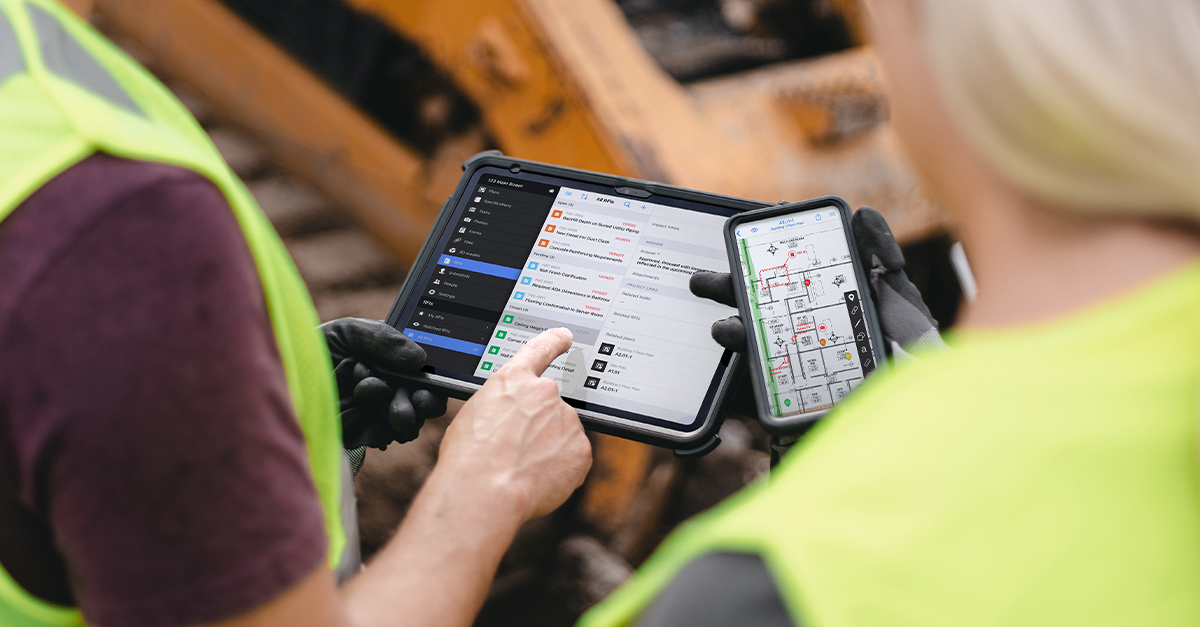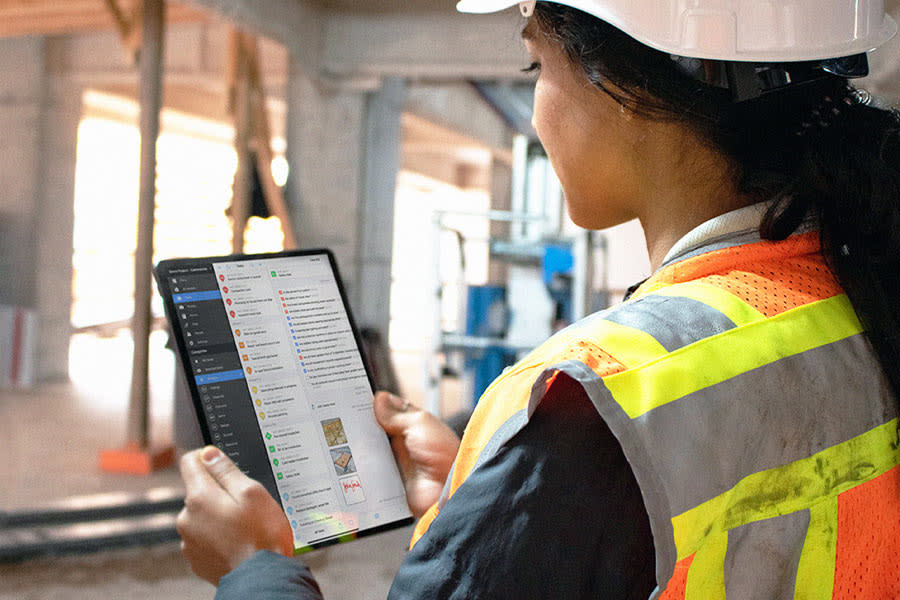Getting buy-in from the field for digital project management
 Implementing construction technology and digitizing our workflows presents some unique challenges in the construction industry. Many times we talk about a “top down” approach where we try to implement change though a culture shift within a company. This is a great approach for a general contractor trying to ditch the paper blueprints and go digital within their projects, but it may not address the added challenges posed by the fact that we also need our trade contractors and their crews to buy-in to the process changes in order to realize the full potential.
Implementing construction technology and digitizing our workflows presents some unique challenges in the construction industry. Many times we talk about a “top down” approach where we try to implement change though a culture shift within a company. This is a great approach for a general contractor trying to ditch the paper blueprints and go digital within their projects, but it may not address the added challenges posed by the fact that we also need our trade contractors and their crews to buy-in to the process changes in order to realize the full potential.
Switching from paper blueprints to shared digital drawings unlocks incredible opportunities to digitize our workflows. Not only does it greatly simplify drawing and revision management, it enables the ability to use greatly improved digital workflows for things like submittals, requests for information, change orders, and task management. Explaining this to a group of project engineers on a jobsite is one thing. Getting the trade contractor crews that will come on and off of that site throughout the project’s life cycle is an entirely different challenge.
Trade contractors employ many people who are trained to perform the tasks within their trade. They may not immediately possess all the skills and knowledge needed to easily transition to digital drawings and workflows, which can result in difficulties getting their buy-in. Here are a few of the common challenges and some potential solutions to ease this transition.
1. Communicate the importance and what’s in it for them
We have to do better at communicating information among the project team members, and the trade contractors and their crew leaders cannot be left out in this process. Improvements here can reduce rework, improve safety, and result in less stress and pressure on the crews in the field. Make this one of the goals! Let them know that the processes being adopted are meant to improve how they find and communicate information. The goal is to put everything they need at their fingertips so they don’t have to go searching all over the jobsite for the latest drawing revisions, RFI clarifications, or superintendent instructions. All they have to do is look at the project information on their tablets from wherever they are.
2. Ease the transition to digital by equipping them with something familiar
Most people in the field probably already have a smartphone that they use every day. That may be an iPhone or an Android phone. Whichever one it is, that’s the operating system they are already familiar with, so consider giving them a matching tablet. Why complicate the transition by having to train all the Android users how IOS works, and vice versa? Instead of buying them all the same thing, consider giving the Android users an Android tablet, and the iPhone users an iPad. It can greatly reduce the amount of training that will be needed.
3. Start by digitizing workflows that are important to them
Get field personnel used to digital workflows by requiring them to use their new technology to do things that are both simple and essential. One example for field labor crews is submitting time sheets and payroll information. Everyone wants to get their paycheck. If the only way they can do this is via an app on the tablet, they will probably make it work. This normalizes the use of the tablet and digital workflows, and makes it easier to adopt new concepts such as submitting change orders or RFIs via the tablet.
4. Each project can benefit from individualized training
Each project is different. Owner requirements may vary. Architects may have processes they want followed. Some project managers may have their own preferences and procedures. Remember that trade contractors and their crews move from project to project with different clients and general contractors. They may already know how to use Fieldwire on their tablet, but that doesn’t mean they couldn’t benefit from some quick on-site training to learn about how a specific project will be utilizing all the available features and processes. Set up times to do this with the trades to increase your chances of success on each project.
5. Make sure they don’t revert to their old ways!
Keep an eye out on usage. It is not uncommon for field personnel to revert back to the old ways of paper after successfully implementing a new technology or workflow. When someone has been doing it the same way for years (or decades), it’s just human nature to revert back to the old ways when the pressure to adopt the new workflows subsides. Curb this tendency by eliminating the ability to revert, or by monitoring their app usage. If you see that a crew leader hasn’t updated or synced the drawings in two weeks for a job they are actively working, chances are they are getting their information from somewhere other than the app!
Adopting technology and digitizing processes in construction is a key component in improving safety, quality, and productivity in the field, but only if we actually include the field in the process. Consider these solutions to involve the field and get their buy-in to help make the change.
Editor’s note: Fieldwire is proud to feature construction expert Jim Rogers on our blog. Jim has decades of experience in construction management and safety, and is an instructor for LinkedIn Learning — an online library of video courses taught by industry experts from across the globe. LinkedIn Learning is a great source for construction management education and content, and it’s included if you have a LinkedIn Premium account.
Watch Jim's Construction Management Micro Learning video series on YouTube.
Jim enjoyed learning about Fieldwire so much that he created an online course on how to use Fieldwire to manage construction drawings and processes.

 Jim Rogers •
Jim Rogers • 


















